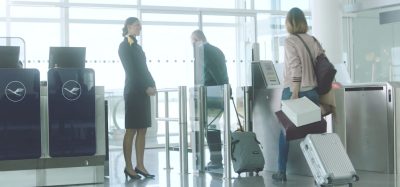Interview Spotlight: Alex Sauriol, CTO and Co-Founder, Searidge Technologies
- Like
- Digg
- Del
- Tumblr
- VKontakte
- Buffer
- Love This
- Odnoklassniki
- Meneame
- Blogger
- Amazon
- Yahoo Mail
- Gmail
- AOL
- Newsvine
- HackerNews
- Evernote
- MySpace
- Mail.ru
- Viadeo
- Line
- Comments
- Yummly
- SMS
- Viber
- Telegram
- Subscribe
- Skype
- Facebook Messenger
- Kakao
- LiveJournal
- Yammer
- Edgar
- Fintel
- Mix
- Instapaper
- Copy Link
Posted: 26 February 2018 | Alex Sauriol | No comments yet
Alex Sauriol, CTO and Co-Founder of Searidge Technologies discusses how remote and digital air traffic control towers are revolutionising airport solutions.
Just how revolutionary could remote ATC solutions become for the airport industry?
The majority of air traffic control (ATC) services have long been provided ‘remotely’ – from en-route control centres – but remote ATC is a newer concept for the airport industry. The ability to provide ATC from a remote tower that can be located almost anywhere will enable airports to pool and share resources, resulting in more efficient and cost-effective ATC. Where the technology can really revolutionise airports is with the creation of digital towers at major airports. Digital towers involve the integration of digital data to provide increased automation of ATC. Where airports are expanding, building new runways and increasing capacity, digital towers will support that expansion.
What are the three main benefits of deploying remote ATC technology?
Safety. Efficiency. Capacity. While this is probably true of any ATC technology, it is especially true in the digital/ remote tower deployment. From a safety point-of-view we are providing controllers improved situational awareness and improving tools to handle exceptional circumstances. For efficiency, digital towers improve the sharing of information and allow more flexibility in how/ where ATC services can be delivered – the possibility is also there for increasing overall performance in low visibility. And from a capacity point-of-view for hub airports where seconds matter, digital airport integration and artificial intelligence (AI) are opening up new possibilities around performance management that can lead to increases in peak capacity.
Can one remote ATC solution suit all airport requirements, or can solutions be customised?
While at its core, the basic function of ATC services might be similar across airports, specific operational challenges, workforce, and technological ecosystem can vary greatly. This is even more true working in different countries and so from the ground up, we have taken a ‘platform approach’ instead of a ‘system approach’ which is to say each solution is customised to the unique operation and set of circumstances at the time of deployment using a common platform.
For an air navigation service provider (ANSP) providing tower services across a number of different airports, the investment case may be driven by increasing ATC service levels at seasonal airports where a large airport may be focused on runway expansion and land re-use. In these instances, the solution will be customised specifically to each of these differing needs. One platform. Many solutions.
If we look at the smart tower prototype solution that we are developing for CAAS at Singapore Changi Airport, they have a series of specific needs which they wish to address; to support expansion of the airport and to explore how digital ATC operations can bring additional capacity benefits.
What more does the industry need to learn about remote ATC to ensure its future development?
Right now – as we rollout digital and remote towers and in terms of research and development – we are focused how (AI) can empower the next generation of digital and remote tower systems. Specifically, for large and complex operations, we are working on AI models that can improve runway safety and the overall ATM efficiency. For smaller airports there are numerous ways in which AI can help with automation of certain systems and functions. For us it is important to raise awareness with the industry on how digital/remote towers can unlock further benefits with the addition of AI.
Issue
Related topics
Aeronautical revenue, Air traffic control/management (ATC/ATM), Airport construction and design, Airport development, Digital transformation, New technologies, Remote digital towers, Runways and pavements, Safety


















